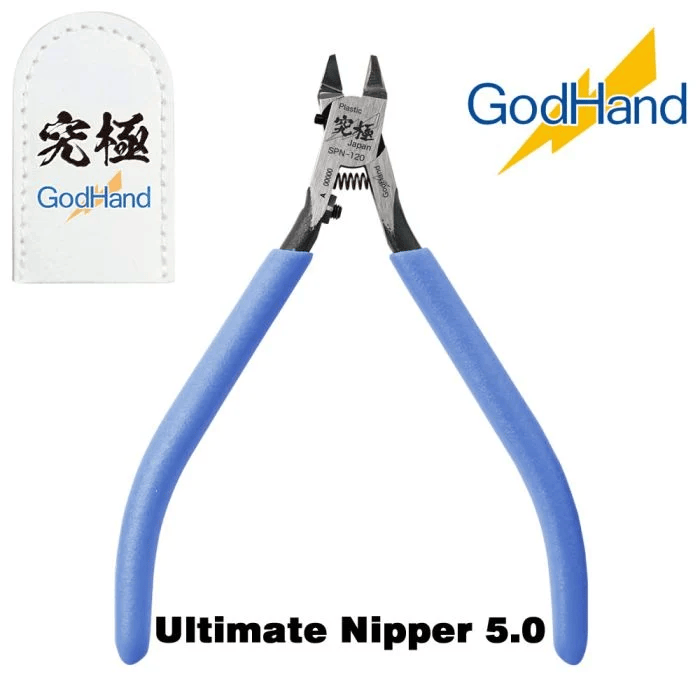GMU 1/48 Pz.Kpfw.II 'Luchs' # 48007
The Pz.Kpfw. II Ausf. L 'Luchs' (Panzerkampfwagen II Ausführung L, "Luchs" meaning "Lynx" in German) was a light reconnaissance tank developed and used by Nazi Germany during World War II.
As a specialized variant of the Panzer II family, the Luchs was designed primarily for battlefield reconnaissance, utilizing its high speed, mobility, and relatively light armament to scout enemy positions and provide intelligence for larger armored units.
It was one of the most advanced light tanks produced by Germany during the war.
Key Characteristics:
Armament: The primary weapon of the Luchs was the 2 cm KwK 38 L/55 autocannon, which was effective against infantry, soft-skinned vehicles, and lightly armored enemy vehicles. The autocannon had a high rate of fire, making it useful for hit-and-run tactics. Additionally, the tank was armed with a 7.92 mm MG34 machine gun, mounted coaxially with the main gun, for anti-infantry defense and close-quarters combat.
Armor: The Luchs had relatively thin armor compared to medium and heavy tanks, but it was sufficient for its role as a reconnaissance vehicle. The front hull and turret were protected by 30 mm of armor, with thinner armor on the sides and rear. This level of protection could withstand small arms fire and light anti-tank weapons, but the Luchs was vulnerable to more powerful anti-tank guns, artillery, and larger enemy tanks.
Mobility: The Luchs was powered by the Maybach HL 66P engine, delivering 180 horsepower, which gave it excellent mobility for a light tank. With a top speed of 60 km/h (37 mph) on roads, it was one of the fastest tanks of its time, ideal for reconnaissance missions. The tank's range of 290 km (180 miles) on roads allowed it to operate over long distances, a valuable asset in fast-moving campaigns.
Suspension and Tracks: The Luchs featured a torsion bar suspension, which provided smooth handling and stability on rough terrain. This suspension system, combined with wide tracks, allowed the tank to traverse difficult ground, including mud, snow, and uneven terrain, enhancing its scouting capabilities.
Crew: The tank had a crew of four: a commander (who also doubled as the gunner), a loader, a driver, and a radio operator. The commander’s dual role reflected the Luchs' reconnaissance mission, where coordination and communication were crucial to its effectiveness on the battlefield.
Operational Role:
The Pz.Kpfw. II Luchs was designed as a reconnaissance tank, built to gather intelligence on enemy positions and movements while avoiding direct combat with heavier enemy forces.
It excelled in hit-and-run tactics, using its speed to move quickly across the battlefield, observe enemy forces, and report back to German command.
Its relatively light weight and good mobility allowed it to maneuver through difficult terrain, making it suitable for reconnaissance-in-force and flanking maneuvers.
Production and Service:
The Luchs entered production in 1942, with a total of 100 units built by the war's end.
It was primarily deployed with panzer divisions and reconnaissance battalions on the Eastern Front and in Western Europe.
The tank performed well in its intended role, providing crucial battlefield intelligence and serving as a fast-moving scout.
However, its limited numbers meant that it never had a widespread impact on the overall war effort.
Advantages:
Speed and Agility: The Luchs' high speed and mobility were its greatest assets, allowing it to outmaneuver heavier tanks and avoid direct confrontation with enemy forces.
Compact Size: Its relatively small size made it harder to spot and target, aiding in its role as a scout vehicle.
Effective Armament for Its Role: The 2 cm autocannon was well-suited for engaging lightly armored vehicles, infantry, and soft targets, which were the typical threats encountered in reconnaissance missions.
Limitations:
Light Armor: While sufficient against small arms and light anti-tank weapons, the Luchs' armor was inadequate against larger anti-tank guns and medium or heavy tanks. It was vulnerable to enemy fire if caught in open combat.
Limited Firepower: The 2 cm gun, while fast-firing, was insufficient for engaging heavily armored vehicles, limiting the Luchs to a reconnaissance and support role rather than frontline combat.
Low Numbers: With only 100 units produced, the Luchs was a rare vehicle, and its impact on the broader war effort was limited by its scarcity.
Conclusion:
The Pz.Kpfw. II Ausf. L 'Luchs' was a highly capable and advanced light reconnaissance tank designed for speed, agility, and battlefield intelligence gathering.
Its ability to move quickly and provide vital reconnaissance made it a valuable asset for German forces, particularly in fast-moving campaigns and in situations where battlefield awareness was crucial.
However, its light armor and limited numbers meant that it was not suited for direct combat against more heavily armored enemy vehicles, and it remained a niche vehicle in the German armored forces.
Despite these limitations, the Luchs is remembered as one of the most effective light tanks of World War II in its reconnaissance role.
Did you know we are the UK's largest GodHand Tools stockist and official UK distributor!
Check out their amazing Ultimate Nipper 5.0, which is the best Nipper on the market.
All Godhand tools are available for next-day delivery.

















 Spread the cost with Paypal Credit
Spread the cost with Paypal Credit
 Spread the cost with Klarna
Spread the cost with Klarna










